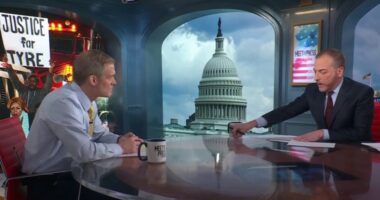
The U.S. federal government is giving whole new meaning to the old saying “the check is in the mail.” Once meant as an assurance households gave to ward off encroaching creditors, it has instead become a regular promise of cash for households by Uncle Sam.
Last week a third round of relief payments started showing up in the accounts of millions of Americans, $1,400 payments so far sent to roughly 90 million adults totaling about $242 billion. That is on top of $600 per recipient payments sent in December and $1,200 sent earlier last year and in all will add up to more than $800 billion.
The big question for the economy: What will come of the money?
It turns out there is a lot we already know to answer that. Americans have spent some of it, saved a lot of it and used large portions to pay down burdensome debt. That leaves the economy primed for a consumer boom once business fully reopens and poses risks that worry some people on Wall Street, including higher inflation and an asset bubble. Moreover, it leaves a different debt overhang—federal debt—that poses new uncertainties for business, households and Uncle Sam himself.
“There is a lot of liquidity and desire to spend,” says Jonathan Parker, a Massachusetts Institute of Technology economics professor who studies how people spend government checks. He argues the latest round of payments designed by the Biden administration should have been more targeted to those most in need.
Jared Bernstein, a White House economic adviser, told The Wall Street Journal last month the program is meant to provide a broad array of families a financial cushion.
Economists have been studying how households spend cash windfalls for decades. In a 1957 book called “A Theory of the Consumption Function,” the University of Chicago economist Milton Friedman posited that households don’t spend cash windfalls because they manage their spending for the long run. If they think taxes are going to go up in the future to pay for government borrowing in the present, they will save a windfall check from the government because they don’t think it is permanent. In other words, it won’t serve as short-term stimulus.
It became known as the permanent-income hypothesis.
The government—under Republicans and Democrats—has tested the hypothesis over and over again in the past 20 years with rounds of payments to households in 2001, again in 2008 and repeatedly last year. The circumstances were different in each case—a stock bust in 2001, a mortgage crunch in 2008 and a health crisis last year. But household behavior has been surprisingly consistent. People tend to spend roughly one-third of the money soon after getting it, says Mr. Parker, showing Friedman was only part right. The rest is saved or used to pay off debt.
Consistent with the past, a survey by the Federal Reserve Bank of New York showed that 36% of households last year saved the first round of their relief payments, 35% paid down debt and the rest mostly spent it.
Households have entered 2021 armed with boatloads of cash—on average—and the cleanest balance sheets they have had in decades. Households finished 2020 with $14.1 trillion combined in checking and savings accounts, compared with $11.4 trillion in 2019, according to Federal Reserve data. Their debt-service burden—the percentage of after-tax income used to pay off debt—fell to its lowest level in records going back to the early 1980s.
This is a much different story than was the case when the U.S. was coming out of recession in 2009. The debt-service burden then was at record highs and households were focused on paying off mortgage debt. It took them years to do it.
Claudia Sahm, a former Federal Reserve economist who has teamed with University of Michigan researchers Joel Slemrod and Matthew Shapiro to study the effects of government payment programs, sees distributional benefits for low- and moderate-income households from the checks.
The government currently borrows at very low interest rates, less than 2.5% even for a 30-year Treasury bond. When a low-income or moderate-income household uses that cheap money to pay off high-interest-rate credit-card loans or payday loans, it is a net gain for society, she argued.
SHARE YOUR THOUGHTS
How are you planning to spend your stimulus check? Join the conversation below.
Michigan surveys showed that among households that paid down debt with their 2020 payments, a third paid off credit-card debt and nearly one in five paid off high-interest payday loans. In 2008, more than half paid off credit-card loans. The New York Fed found that low-income households were most likely of any group to use last year’s payments to pay off debt. The funds also keep some households from having to take out expensive loans in the first place.
“Shoring up family balance sheets has long-lasting effects,” said Ms. Sahm.
Yet there are trade-offs in all of this. If businesses respond to a pickup in demand by raising prices, then the stimulus money might end up doing little more than fattening the profit margins of companies at households’ expense.
Then there is the question of the government’s debt burden. The Biden administration is exploring raising taxes on high-income households and corporations, among other things. Administration officials say they haven’t made decisions yet on how much, on whom, or exactly how the money is meant to be used.
Write to Jon Hilsenrath at [email protected]
Copyright ©2020 Dow Jones & Company, Inc. All Rights Reserved. 87990cbe856818d5eddac44c7b1cdeb8








